Why this resume works
- Highlights industry-specific skills: Focusing on journalism-specific skills like investigative reporting and broadcast writing showcases the applicant’s ability to craft compelling stories tailored for diverse media platforms and audiences.
- Quantifies accomplishments: Measurable accomplishments, such as increasing readership by 30% and boosting viewer ratings by 25%, highlight tangible success.
- Uses action-oriented language: Strong action verbs like reported, produced, and coordinated emphasize initiative and effectiveness, conveying a proactive approach.
More News Reporter Resume Examples
See our news reporter resume examples to learn how to highlight your investigative skills, storytelling abilities, and multimedia expertise. These media and communication resume samples will guide you in creating a compelling resume that stands out in journalism.
Entry-Level News Reporter
Why this resume works
- Centers on academic background: Emphasizing a master’s degree in journalism showcases the applicant’s strong academic foundation, which is important for early career development in journalism.
- Shows digital literacy: Using skills like video editing and digital media skills, the applicant demonstrates robust computer skills essential for today’s news industry.
- Effective use of keywords: Strategically embedding terms such as investigative reporting and social media strategy ensures the resume aligns with keywords needed to pass ATS.
Mid-Level News Reporter
Why this resume works
- Points to measurable outcomes: Quantifiable achievements like boosting viewership by 20% and ratings by 15% reveal the applicant’s impact-driven approach, showcasing their ability to influence audience engagement.
- Demonstrates language abilities: Language skills in Spanish, German, and French improve cross-cultural communication opportunities, supporting diverse journalism tasks.
- Includes a mix of soft and hard skills: The applicant mixes hard skills in digital media with interpersonal skills like public speaking and storytelling, illustrating a well-rounded professional profile.
Experienced News Reporter
Why this resume works
- Focuses on work history: Using a chronological resume format, the applicant paints a clear picture of career growth, illustrating extensive experience from correspondent to news reporter over 14 years.
- Lists relevant certifications: The applicant’s certifications reveal dedication to journalism, showcasing an up-to-date understanding of broadcasting and digital media through recognized industry credentials.
- Emphasizes leadership skills: Demonstrating leadership skills, the applicant led a team to win a local journalism award, reflecting capabilities in guiding projects to success.
News Reporter Resume Template (Text Version)
Hank Green
Eastside, WA 98002
(555)555-5555
Hank.Green@example.com
Professional Summary
Accomplished news reporter with 5 years experience in media. Skilled in investigative reporting and audience engagement, achieving significant readership growth. Proven track record in producing high-impact stories with SEO optimization.
Work History
News Reporter
City Beat News – Eastside, WA
August 2022 – August 2025
- Reported on daily city events with accuracy
- Increased readership by 30% through engaging stories
- Conducted 50+ interviews to source credible insights
Broadcast Journalist
Star Media Group – Seattle, WA
January 2020 – July 2022
- Covered 20+ live events monthly with precision
- Boosted viewer ratings by 25% via compelling reports
- Coordinated team of three to deliver timely news
News Correspondent
Global News Network – Spokane, WA
August 2018 – December 2019
- Produced 15 investigative pieces annually
- Enhanced article shares by 40% on social media
- Wrote weekly columns on political trends
Skills
- Investigative Reporting
- Content Creation
- SEO Optimization
- Interview Techniques
- Broadcast Writing
- Public Speaking
- Social Media Engagement
- Video Editing
Education
Master of Arts Journalism
Columbia University New York, NY
May 2018
Bachelor of Arts Media Studies
University of California Berkeley, CA
May 2016
Certifications
- Certified News Analyst – National Journalism Association
- Broadcast Communications – American Communications Institute
Languages
- Spanish – Beginner (A1)
- French – Beginner (A1)
- German – Beginner (A1)
Related Resume Guides
Advice for Writing Your News Reporter Resume
Explore our advice on how to write a resume tailored for a news reporter role. Discover how to highlight your storytelling skills, journalistic flair, and ability to capture the essence of breaking news.
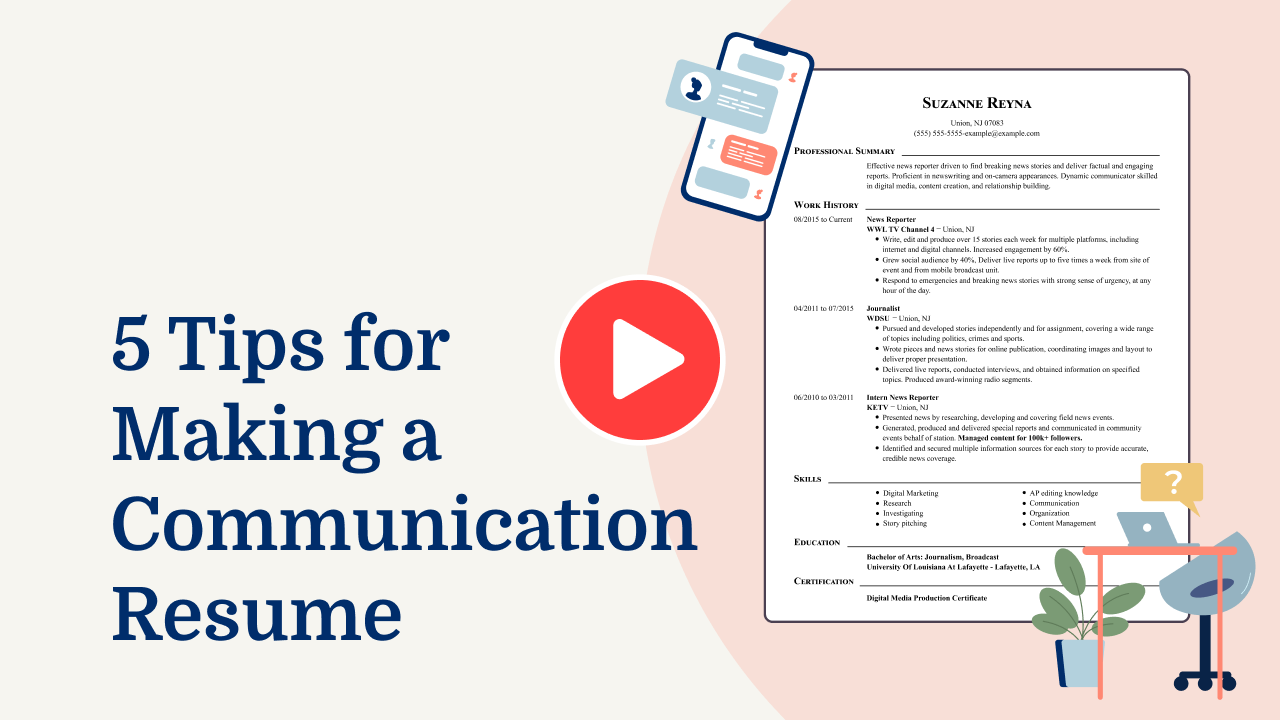
Showcase your portfolio or projects
Including a portfolio or sample projects on your resume is especially important for a news reporter. It gives employers a direct look at your reporting style, writing ability, and investigative skills.
A well-structured portfolio allows you to highlight your strongest work, whether that’s published articles, broadcast segments, or digital news stories. Linking to an online portfolio, such as a personal website, newsroom profile, or platforms like Muck Rack, can be highly effective. You can also feature select clips or projects directly on your resume if they are particularly relevant to the role.
When showcasing projects, list the story title and the publication or station where it appeared. Provide a short description of the piece, its focus, and the audience it served. Then highlight your contributions, such as conducting interviews, researching and verifying facts, or covering breaking news.
Whenever possible, include the impact of your work. For example, readership numbers, audience reach, or how the story informed the public. This approach not only demonstrates your reporting experience but also shows your ability to communicate clearly, think critically, and deliver stories that matter.
For a news reporter role, emphasizing projects that showcase investigative work, on-the-ground reporting, or coverage of high-profile events will stand out most to employers. Showcasing a mix of written, on-air, and digital reporting also reinforces your versatility and adaptability across today’s evolving news platforms.
Example of a projects section
Investigative Series on Local Environmental Issues
Green Town News
March 2023
- Conducted in-depth research and interviews with local activists and officials to highlight pollution problems in the community.
- Published a five-part series that increased public awareness and led to policy discussions at town hall meetings.
- Used multimedia storytelling techniques, including video reports and interactive maps, to engage readers.
Coverage of City Council Elections
Metro Daily Times
July 2022 – November 2022
- Reported on election campaigns, focusing on applicant platforms and voter concerns through regular articles and social media updates.
- Coordinated live coverage of election night results, providing real-time analysis and insights for readers.
- Worked with photographers to capture powerful images that represented the electoral atmosphere.
Need help with your resume? Take a look at our professional resume examples to find great ideas and make yours stand out.
Emphasize your most relevant skills
For a news reporter, showcasing both technical and soft skills is essential. On the technical side, this may include proficiency with newsroom software, content management systems, video and audio editing tools, or digital publishing platforms.
Equally important are soft skills, such as strong communication, the ability to ask insightful questions, adaptability under deadline pressure, and building trust with sources. Highlighting both demonstrates that you not only have the tools to produce stories but also the interpersonal skills to connect with audiences and gather accurate information.
To make your skills stand out, consider creating a dedicated skills section on your resume. Here, you can list relevant software, digital tools, or storytelling techniques you’re confident using. Then, reinforce these skills in your work history by showing how you’ve applied them.
For example, you might note that you used Adobe Premiere to edit a breaking news package under a tight deadline or relied on research skills to uncover details for an investigative feature.
This approach strengthens your resume by providing concrete examples of how you’ve applied your abilities in real-world reporting. It not only highlights what you can do but also helps employers see how you’ll contribute effectively to their newsroom.
Choose a resume format that highlights your storytelling skills and investigative achievements in an organized way.
Choose a professional resume template
When choosing a resume template for a news reporter role, aim for one that combines professionalism with creativity. A clean and structured design is important—it should naturally guide the reader’s eye through your experience, skills, and accomplishments.
Avoid flashy fonts or overly decorative elements, as they can distract from your content. Instead, select simple layouts with clear headings, consistent spacing, and subtle bold or italic to highlight important details.
Opt for a format optimized for ATS (applicant tracking system) compatibility to ensure visibility during digital screenings. This involves using standard fonts like Arial or Times New Roman and steering clear of complex graphics or columns that could confuse the system.
Focus on templates with a strong visual hierarchy so hiring managers can easily scan your qualifications. For a news reporter position, this might mean prioritizing sections such as work experience and writing samples while maintaining an easy-to-read and professional look throughout.
Our Resume Builder helps you create a resume that highlights your storytelling skills and media experience to stand out to hiring managers.
Format your resume properly
A proper resume format makes it easy to read and looks professional. For a news reporter, use a chronological resume if you have lots of experience to show your work history and growth. If you’re just starting, try a functional resume to highlight your skills in storytelling and research rather than past jobs.
5 resume formatting tips
- Structure with clear headings: Use bold section titles like “work experience” and “skills” for easy organization.
- Select a readable font: Choose fonts like Arial or Calibri in 10-12 pt size to ensure clarity.
- Implement bullet points: Convert details into bullet points for quick scanning by hiring managers.
- Limit to one page: Keep resumes one page unless you have extensive experience that warrants more space.
- Ensure proper spacing and alignment: Maintain consistent spacing and alignment for a clean, professional appearance.
Ensure your resume passes through applicant tracking systems! Our ATS Resume Checker spots common problems and gives tips to make your resume better.
FAQ
Do I need to include a cover letter with my news reporter resume?
Yes, including a cover letter with your news reporter resume is a smart strategy as it helps you stand out from other applicants.
A cover letter allows you to convey your enthusiasm for journalism while showcasing specific stories or projects you’ve worked on that tie directly to the role you’re applying for.
If the news outlet emphasizes investigative journalism or has a strong local focus, be sure to reference any relevant experience in those areas to show alignment with their priorities.
Using a Cover Letter Generator can simplify the process of creating a tailored cover letter that complements your resume and addresses the job’s criteria effectively.
Browsing through various cover letter examples can also inspire you to structure your content and present yourself as an ideal applicant.
How long should a news reporter’s resume be?
For a news reporter, a one-page resume is typically ideal, especially if you are early in your career. This format allows you to highlight key skills such as writing prowess, familiarity with digital media tools, and any internships or entry-level positions you’ve held.
If you have extensive experience or notable achievements in journalism, a two-page resume may be more appropriate. This lets you showcase significant stories you’ve covered and awards received without omitting important details.
Consider exploring how long a resume should be to determine what best suits your current career stage and accomplishments.
How do you write a news reporter resume with no experience?
When creating a resume with no experience for a news reporter position, emphasize your education, transferable skills, and any relevant projects or extracurricular activities that demonstrate your potential as a journalist. Here are a few tips:
- Emphasize your education: Start with your degree in journalism, communications, or a related field. Include coursework like media ethics, reporting techniques, or broadcast writing to show your foundation in the field.
- Feature school projects or internships: If you’ve worked on a student newspaper, blogged about current events, or completed an internship at a media outlet, detail what you accomplished—such as conducting interviews or producing articles under deadlines.
- Showcase transferable skills: Highlight abilities like strong writing, research skills, public speaking, and teamwork. These are key for news reporting and can be developed through part-time jobs or volunteer work.
- Include relevant extracurriculars: Participation in debate clubs, campus radio stations, or community newsletters demonstrates initiative and real-world application of journalistic skills.
By tailoring your resume with no experience to emphasize these areas, you can make a strong case for why you’re ready to start your career as a news reporter.
Rate this article
News Reporter
Additional Resources
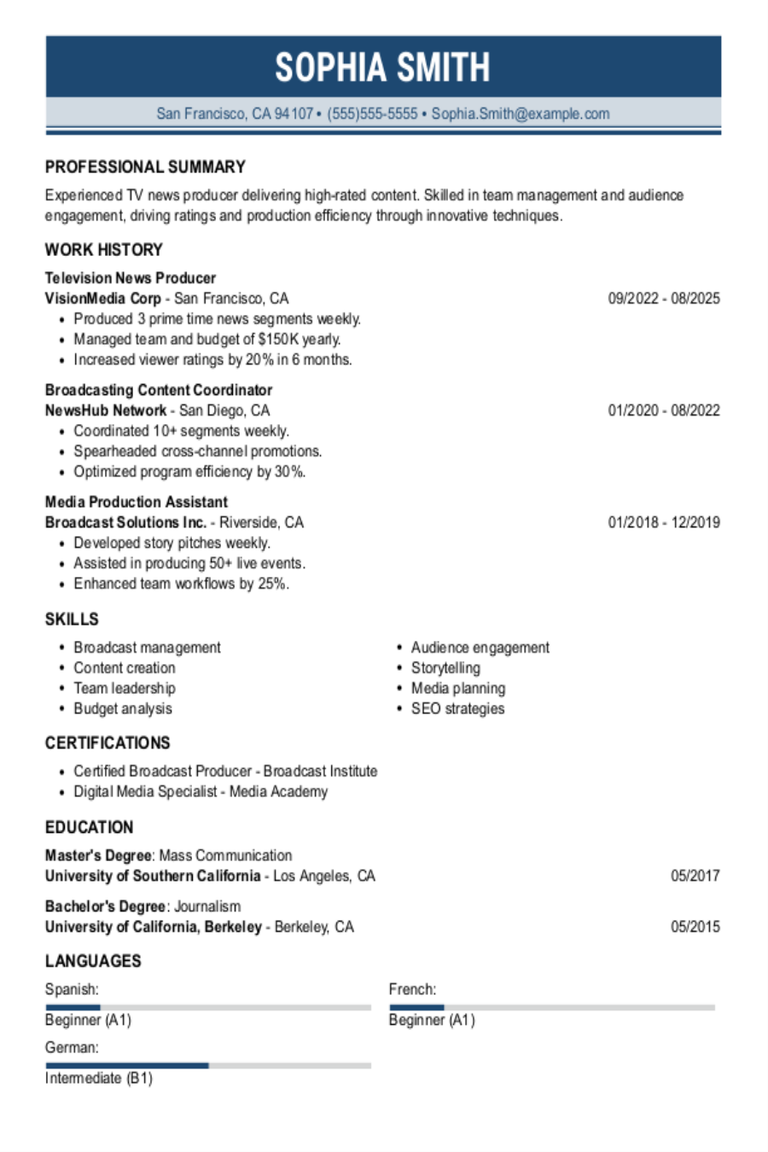
Television News Producer Resume Examples & Templates for 2025
Browse television news producer resume examples that highlight storytelling and production skills. Discover how to showcase your experience in managing news broadcasts and engaging audiences.Build my resumeImport existing resumeCustomize this
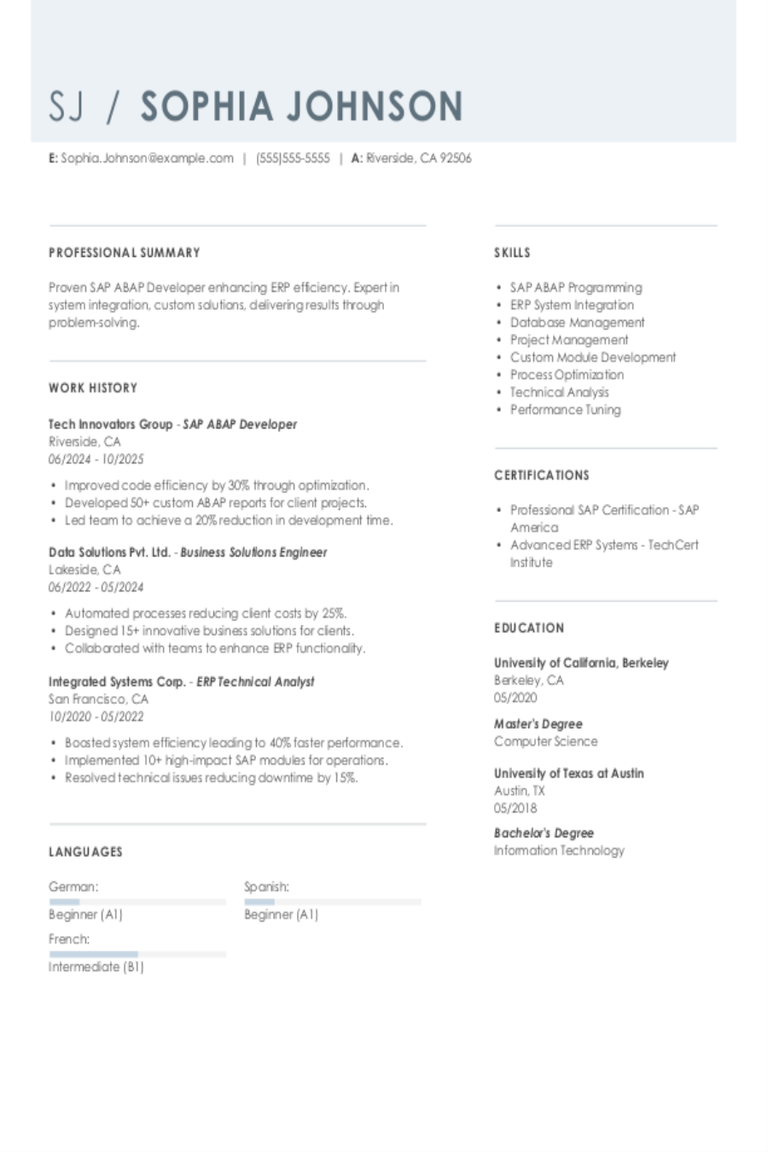
SAP ABAP Developer Resume Examples & Templates for 2025
Explore SAP ABAP developer resume examples and tips to learn how to spotlight your skills in coding, debugging, and system enhancements to stand out to hiring managers.Build my resumeImport existing
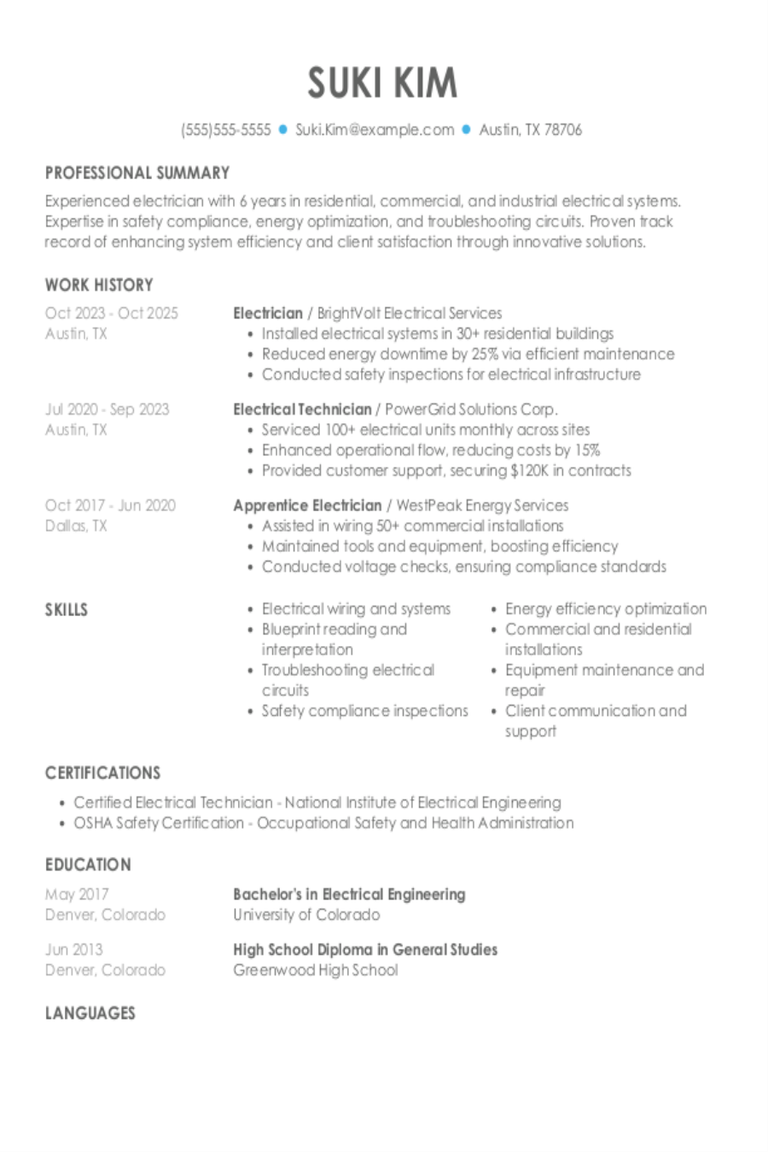
Electrician Resume Examples & Templates for 2025
Explore electrician resume examples to learn how to spotlight your wiring, troubleshooting, and safety skills. See how to emphasize your knowledge of electrical codes and highlight your experience across various
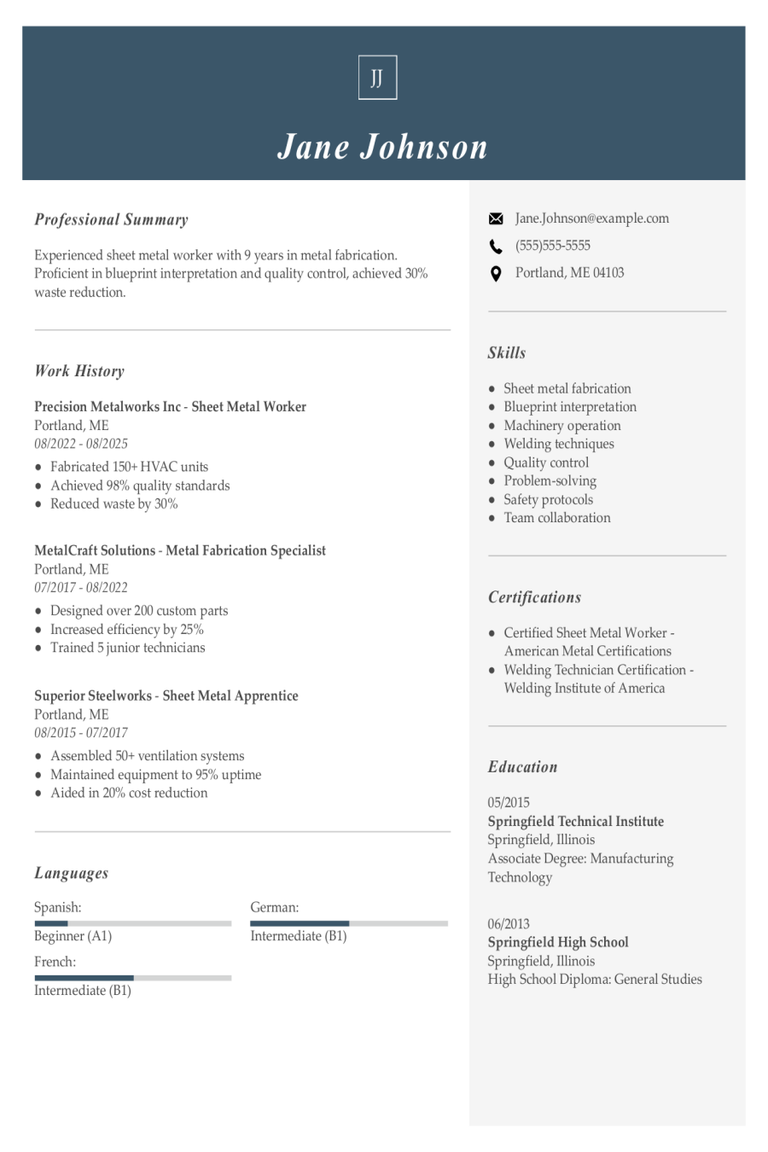
Sheet Metal Worker Resume Examples & Templates for 2025
Browse sheet metal worker resume examples and tips to learn how to highlight your hands-on experience and problem-solving abilities to stand out to recruiters and hiring managers.Build my resumeImport existing
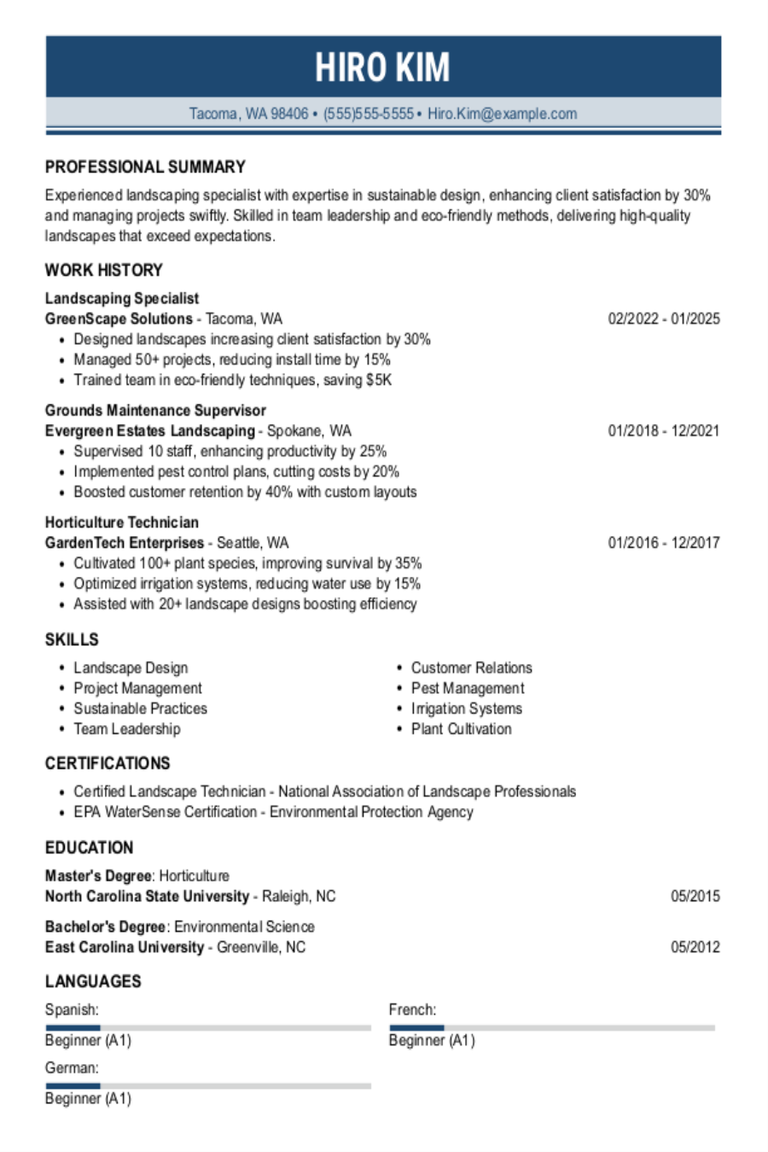
Landscaping Resume Examples & Templates for 2025
Explore landscaping resume examples to see how to showcase your gardening and design skills. Learn how to highlight your experience with plants, tools, and outdoor projects to catch the eye

